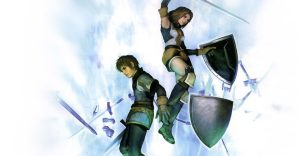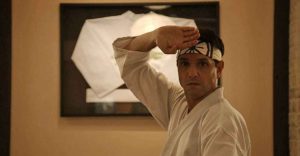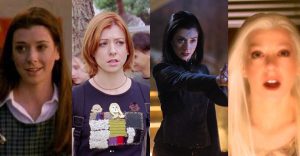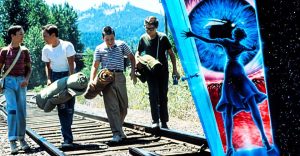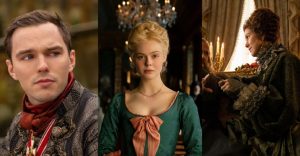Lord Of The Rings: 10 Ways Legolas Got Worse & Worse
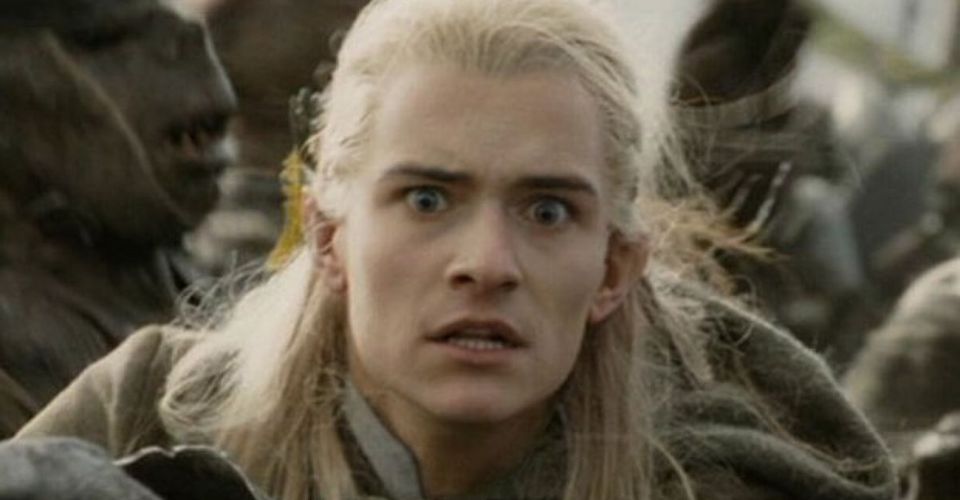
Peter Jackson’s Lord of the Rings and The Hobbit trilogy realized the sprawling world of J.R.R. Tolkien’s fantasy books on an epic scale. Full of daring action, stunning visuals, and memorable characters, the six films told the story of the Ring of Power, created by the dark lord Sauron, and the brave inhabitants of Middle-Earth who sought to defeat him by destroying it.
One of the most popular characters to emerge from the films was Legolas Greenleaf, a formidable archer and the prince of Mirkwood. As accomplished as Legolas was with a bow, there were moments when he let the Fellowship down, and just as many were his fighting prowess aggravatingly defied the laws of physics. Here are 10 ways Legolas got worse and worse.
10 HE OFTEN SPOKE NONSENSE

As mellifluous as J.R.R. Tolkien’s writing is, it doesn’t always translate well in a cinematic adaptation. Lines like “It is not the eastern shore that worries me. A shadow and a threat has been growing in my mind”, said by the Mirkwood prince to no one in particular, lack a certain dramatic weight.
Throughout the films, Legolas was prone to soliloquy, with declarations like “There is a fell voice on the air!” when Saruman was jeopardizing the Fellowship’s journey, forcing them into the Mines of Moria.
9 THE LAWS OF PHYSICS DIDN’T APPLY TO HIM

Legolas was revered as a bowman in both Mirkwood and beyond, and Frodo was lucky to have had him as part of the Fellowship when it set off for Mordor. But as the films went on, it was difficult to believe even Legolas could accomplish the amazing archery feats he performed.
In Fellowship of the Ring, his prowess was shown by being able to extract an arrow from his quiver and fire it with blinding speed. In The Two Towers, it was increased to being able to rapidly fire at orcs while sliding down a set of stairs on a shield at Helm’s Deep, and in Return of the King, he killed a Mûmakil that entire armies couldn’t put down.
8 HE FELT SUPERIOR TO DWARVES

Like most Elves, Legolas felt himself superior to dwarves. In The Hobbit trilogy, he felt himself the better suitor for Tauriel because she fell in love with a dwarf named Kili. In The Fellowship of the Ring, he insulted Gimli routinely with lines like, “A plague upon the stiff neck of dwarves!” to remind him of his place.
In the Battle of Helm’s Deep, he chided the diminutive warrior for not being able to see the hordes of orcs and Uruk-hai approaching with, “Shall I describe it to you, or would you like me to find you a box?”.
7 HE DOUBTED THE CAPACITY OF MAN

Legolas berated Boromir at the Council of Elrond, first for deriding Aragorn, and second for not listening to Lord Elrond’s insistence on destroying the ring.
In The Two Towers, shortly before the Battle of Helm’s Deep he admonished Aragorn for remaining with the people of Rohan choosing to fight, telling him in Elvish that they could not hope to win the fight, and that they were all going to perish.
6 HE NEVER LOOKED LIKE HE STRUGGLED

Elves were renowned in Middle-Earth for their fair beauty, both in face and in physique, but it didn’t necessarily mean they could never be marked by dirt, have torn clothing, or bear a wound from battle – it simply meant they looked better doing it.
Legolas should have been covered in dirt after the Battle of Five Armies and traipsing through the Mines of Moria, in mud after the Battle of Helms Deep and the Battle at the Black Gates and yet he remained perfectly coiffed.
5 HE DIDN’T TAKE ADVANTAGE OF HIS LONG-RANGE SKILLS

Legolas was well known for his skills with a bow in Mirkwood, thanks to his keen Elven senses. In other words, he had superior hearing and eyesight than anyone in the Fellowship, yet there were key moments when he could have put his long-range abilities to use but does not.
He was somehow surprised by a warg rider a mere hundred yards ahead of him and only realizes it’s a scout for an ambush when it begins attacking him. In The Two Towers, he also failed to shoot the suicide-orc before it accomplished its bombing of Helm’s Deep.
4 HE WAS THE ONLY ELF THAT KEPT SURVIVING

Valiant though Legolas was and a credit to his race, he was the only Elf that kept surviving continuously harrowing odds. In the Battle of Five Armies, thanks to his ridiculous physics-defying fight with Bolg, he survived while many of Thranduil’s army was lost.
At the Battle of Helm’s Deep, after the Galadhrim arrived to assist Rohan, they sacrificed themselves against Sauron’s orc hordes. Many untrained members of the Race of Man survived, but just as many woodland elves were lost (including Haldir) but Legolas survived to fight another day.
3 HE WAS MADE TOO PHYSICALLY POWERFUL

In Peter Jackson’s Hobbit trilogy, Legolas is shown taking on countless spiders in Mirkwood, presumably to prepare fans to believe his final confrontation with Bolg, which makes Legolas much more physically powerful than he was shown to be in the Lord of the Rings trilogy.
Assuming Legolas had enhanced physical abilities because of his age (roughly 3,000 years old), and his status as a Sindarin prince, why then was he not chosen to attack the Balrog? Elf-lords from the First Age took them on all the time (Fingon, Feanor, etc), even if they did die in the process.
2 HE REFUSED TO MEND THINGS WITH HIS FATHER

In The Hobbit trilogy, Legolas had a strained relationship with his father, Thranduil, the Elven King of Mirkwood. He opposed his father’s ideals, especially those that obstructed his freedom to pursue Tauriel, an elf far below his status as Prince in An Unexpected Journey.
After Thranduil banished Tauriel in the Desolation of Smaug, Legolas was so wounded that he told his father in The Battle of the Fives Armies that he wouldn’t return home. This makes little sense, especially since it’s Thranduil who sent Legolas to represent Mirkwood at the Council of Elrond.
1 HIS PHYSICAL APPEARANCE CHANGED

When Orlando Bloom filmed the Lord of the Rings trilogy he was in his early 20’s, whereas when he returned to reprise the role for The Hobbit trilogy, he was already 40. Unfortunately, even the most effective de-aging techniques in CGI couldn’t account for the physical stiffness Bloom would exhibit in The Hobbit films.
The combination of using both the actor and a CGI stand-in for certain scenes (such as his fight with Bolg) made the contrast starker, especially when compared to his more agile self in the Lord of the Rings films. His eye color also changes throughout all six films, but color correction was only used in The Hobbit films.
About The Author











